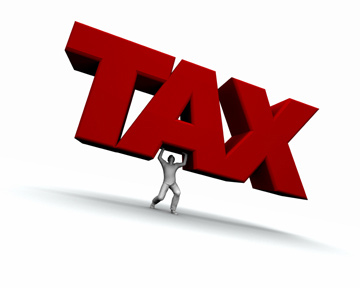The following guest article is from the folk at CreditcardCompare.com.au.
Every taxpayer, at some time or other, tends to feel that taxes are too high and long to live somewhere with lower taxes. For residents of five countries, in particular, that feeling is justified. To understand this, it’s helpful to look at the five countries where residents pay the most tax, and why taxes are so high in these countries.
These Countries are Extremely Expensive Places in Terms of Tax
Denmark (48.2%)
Denmark collects 48.2% of GDP in tax revenues, making it the most expensive country for taxpayers. The primary reason for this high percentage of taxes in Denmark is the country’s extremely large public sector. Denmark employs more public sector employees than almost any other country, at 30% of the country’s full-time workers. By comparison, the public sector in the U.S. makes up only 8% of full-time workers. The larger the public sector, the higher the tax revenues required to support it.
Sweden (46.2%)
Sweden follows closely on Denmark, with tax revenues at 46.2% of GDP. Sweden’s commitment to social services explain the high tax rate. All Swedes are guaranteed a fully paid education from age six, and a basic pension guaranteed to all citizens in their upper years. Heavily subsidized healthcare adds to the tax burden, but increases the social services available to Swedish citizens. On the other hand, Sweden has an elegantly simple tax collection system. In many cases, filing an annual return requires only a text message to the Swedish Tax Agency.
Italy (43.5%)
Italy falls third in the five highest taxing countries, at 43.5% of GDP collected as tax revenues. Like Sweden, Italy provides numerous social services to citizens. Pension payments alone cost the government 14% of GDP. Unfortunately for Italians, tax rates are probably about to go up as the government struggles to climb out from under staggering debt and balance Italy’s budget.
Belgium (43.2%)
Belgium practically ties Italy, with tax revenues reaching 43.2% of GDP. Belgium spends a great deal of money on health care for citizens. The Belgian constitution guarantees all Belgians’ right to health and the government pays for most of citizens’ healthcare. Belgians pay only a small fee for their healthcare. Belgian tax revenues also must cover infrastructure expenses and subsidies to various industries.
Finland (43.1%)
Falling fifth in the lineup is Finland, with tax revenues at 43.1% of GDP. Finland’s healthcare and social security systems are very good, and require a high tax rate to cover the government’s costs. The education system in Finland, which is also quite expensive, is considered the best in Europe.
Notice the Trend?
These countries are all European, with three of them being Scandinavian countries. Four of them are northern European countries, with Italy (currently struggling with its own sovereign debt problem) being the sole representative of the southern European nations.
Analyzing these five countries’ tax rates and the reasons for those high rates of taxation, one thing becomes clear. The five countries that tax their citizens most highly also return much of that revenue to their citizens in the form of social services. It’s worth noting that two of these countries feature in the list of ten best places in the world to live for maternity leave with Sweden and Denmark paying up to 80% and 100% of salary respectively according to “10 Best & Worst Countries In The World For Paid Maternity Leave.”
Caveats
There are some caveats to the observation that the taxation pays for human services.
Denmark actually employees 30% of the workers in the country, providing not only services but an income to those public sector workers. It could be argued that this large public sector workforce is motivated by the same spirit and ideals as the social services in the other four countries.
Italy provides generous social services to employees, like Sweden, Belgium and Finland. However, a portion of Italy’s tax revenues also go toward reducing the country’s considerable debt and balancing the budget.
Belgium does devote some tax revenues to infrastructure and industry subsidies, which contribute to higher taxes. The guarantee of a right to health, however, means that Belgium spends a considerable amount of its tax revenues on social services.
It is interesting to note that the countries with the highest tax rates seem to devote much of that tax revenue to providing services for citizens. This conclusion may be unexpected by some individuals who expect higher taxes to result in more government waste or spending on such sectors as military.
For those who might have originally been glad to not live in one of the five countries with the highest taxes, the benefits of citizenship in these countries may now be clearer.


Is US education mostly funded through property tax? I know my town budget shows 2/3 of property tax funds the schools, but not sure how much is added from State or Federal tax. It would be interesting to see more details to break out these numbers for the US as well as these countries.
Needed here is a comparison of the total cost of health care (both from each person’s pocket and from the government, for both insurance premiums and direct payment of services) per person. I don’t think percentages of GDP income from taxes are meaningful, otherwise.
Probably the same for education.